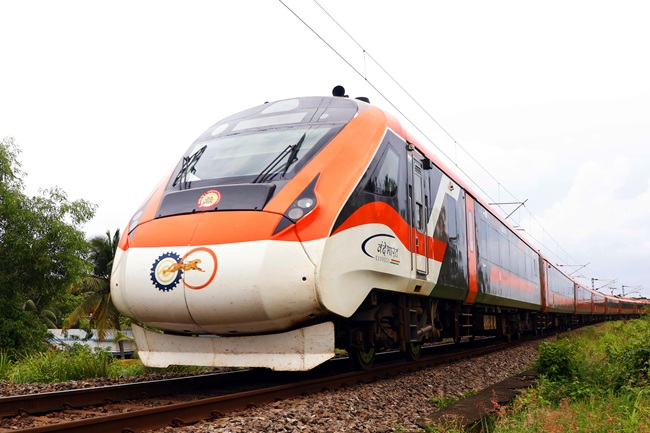Dec 04, 2025
Dec 04, 2025
How Indigenous Tech is Powering Global Frontiers
For decades, India was seen as the world’s IT back office. Capable, affordable, and reliable — but not quite cutting-edge. That perception is changing — rapidly and dramatically. From high-speed trains gliding across foreign rails to supersonic missiles redefining military partnerships, India’s indigenous technology is no longer just serving India. It is transforming the world.
Today, Indian innovation is not a story of imitation. It is a saga of assertion.
Vande Bharat: India’s Gift to Global Railways

When India unveiled the Vande Bharat Express, few predicted that it would one day attract foreign orders. But today, Paraguay has officially placed a request to procure these semi-high-speed trains. Designed and manufactured under the Make in India initiative, Vande Bharat trains feature aerodynamic profiles, energy-efficient engines, AI-driven safety systems, and comfort that rivals Japanese Shinkansen and European rail marvels.
What makes them world-class? They are faster, cheaper to build, easier to maintain, and uniquely suited for tropical climates — something European counterparts cannot guarantee. With export interest now coming from South America and Southeast Asia, Indian rail technology has arrived on the global platform, literally.
BrahMos: Precision with Power

The BrahMos missile, a joint venture between India and Russia, has become a symbol of India’s growing defense diplomacy. Capable of delivering precision strikes at supersonic speeds, the missile has not only impressed military analysts but has already found a buyer in the Philippines, marking India’s first major defense export of such magnitude.
Talks are underway with Vietnam, Indonesia, and even Brazil, signaling a tectonic shift in global defense procurement. For decades, only Western powers could claim a monopoly over cutting-edge missile technology. Today, India is at that table — not as a buyer, but as a builder.
This is not just about exporting hardware. It is about exporting trust, reliability, and a new geopolitical alignment centered around Indian manufacturing.
T-90 Tanks: The Steel Backbone of Combat
India’s military industry is no longer dependent on imports alone. Through licensed production and progressive indigenization, India has not only built over 1,000 T-90 Bhishma tanks domestically but has also developed indigenous variants for potential export.
Equipped with thermal imaging, explosive reactive armor, and smart targeting systems, these tanks match Russian, American, and Chinese counterparts — and in some scenarios, outperform them in tropical warfare conditions.
With interest from friendly nations across Asia and Africa, India is poised to enter the global armored vehicles market as a credible, cost-effective force.
Make in India: From Policy to Powerhouse
None of this happened overnight. The Make in India initiative, launched by Prime Minister Narendra Modi in 2014, was once mocked by critics. Today, it is rewriting India’s position in the global supply chain.

From aerospace to AI, and railways to renewable energy, India is no longer simply a consumer of innovation. It is a creator. Defense exports have grown by 700% in the last six years. Rail exports are now a formal strategy. Telecom components, semiconductors, satellites, and drones — all carry the hallmark of Indian ingenuity.
What makes Indian tech unique? It is frugal without being fragile. It is adaptable without compromise. It is built to perform in the most unforgiving environments — be it battlefield or border, jungle or urban sprawl.
Final Thoughts: Can the World Keep Ignoring India’s Tech Might?
Why does Indian engineering threaten to unsettle the old tech order?
Why are nations, once skeptical, now lining up to procure Indian solutions?
Can the Western world afford to underestimate India’s next wave of innovation?
And more importantly — will India itself recognize the magnitude of its potential before the world does?
This is not just India’s industrial renaissance. It is a geopolitical statement. It signals a future where Made in India isn’t a tag. It is a benchmark.
And perhaps, just perhaps — the next global tech superpower doesn’t lie in Silicon Valley or Shenzhen, but somewhere between Bengaluru, Hyderabad, and Pune.
Images (c) istock.com
05-Jul-2025
More by : P. Mohan Chandran